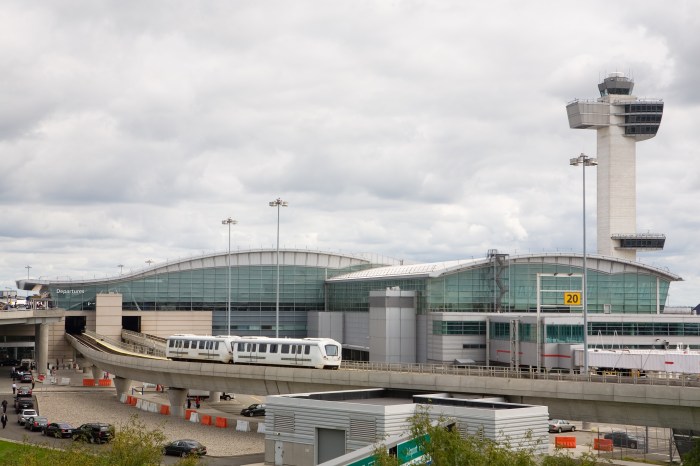Jamaica High School is a magnificent building — a beacon on a hill that stands out in a distinctly middle-class neighborhood in Queens. It is majestic and elegant — a landmark that exudes history.
Walk the halls and you will see black and white pictures of tweed-suited principals. You can see one of them appeared on “Open End” with David Susskind, discussing an issue or other. When was the last time you saw a high school principal interviewed on a news show?
Walk further and you will see photos of the doughboys who died in World War I. This one died of malaria, that one perished from pneumonia. Then comes the World War II vets. They have all passed through these halls, and why not? Jamaica HS has been an integral part of the community for 118 years.
Alas, city Schools Chancellor Joel Klein has passed a writ of execution on Jamaica HS, threatening to halt its rich history. The primary reason given is that Jamaica HS has a graduation rate of less than 50 percent.
But the chancellor’s statistics are wrong. This is not surprising because the school operates with a secretarial staff slashed from 13 to five, insufficient guidance personnel and a relatively new principal. After the chancellor issued his death sentence, a careful review of the graduation data revealed that 258 of fewer than 500 seniors graduated in 2009, which is clearly over 50 percent.
Jamaica HS’s four-year graduation rate was 38 percent in 2005, 42 percent in 2006, 52 percent in 2007 and 53 percent in 2008. This is real progress. Last month, Klein celebrated the city’s 14 percent gain in National Assessment of Educational Progress math scores from 2003-09 as a success. Why, then, is Jamaica HS’s four-year, 15 percent rate gain — marginally outpacing the chancellor’s own progress — not also a success?
The chancellor’s assertion that only one in four Jamaica HS students receives a Regents diploma is also inaccurate. In 2009, Jamaica HS had 143 Regents diplomas, 35 advanced Regents diplomas and four advanced Regents diplomas with honors. That adds up to 182, above 25 percent, and a 13 percent increase from the 159 in 2008.
Another reason cited for Jamaica HS’s closure is declining enrollment. Jamaica HS is just beginning to recover from the stigma created when the city Department of Education labeled the school “persistently dangerous” after a previous principal insisted on reporting even the most minor of incidents. Enrollments have actually leveled off and are starting to go up. They would rise much more rapidly if Jamaica HS received proper support.
If Jamaica HS dies, money will be lavished on new schools that will take years to grow. These schools will likely turn away the non-traditional, “over the counter” pupils that Jamaica HS accepts. A total of 330 students registered over the counter so far this fall — more than the 273 who enrolled over the fall 2008 semester. Many came from other states and countries. Where will these students go next year?
These are the students new schools tend to shun. Queens Collegiate, a new small school started in 2008 within Jamaica HS’s facility, has only six English language learners and no most restricted environment special education students. Jamaica HS has 170 students in special education, 259 English language learners and 71 students with interrupted formal education.
Similar pupils will more than likely go to neighboring comprehensive high schools in Queens next year, despite the fact there is virtually no space for them.
On Dec. 16, Klein sent Debra Kurshan, head of the DOE Office of Portfolio Planning, to a public meeting at Jamaica HS. Kurshan assured the outraged crowd that the closure of Jamaica HS was not a done deal. It was just a proposal that required approval from the DOE Panel for Educational Policy before it could be finalized. Kurshan made this statement without a hint of irony.
Up to now, the PEP has never rejected any request by Mayor Michael Bloomberg or chancellor. We pin our hopes on the possibility the mayor, chancellor or panel will consider all the negative consequences of closing this school. Jamaica HS has long been a cornerstone of the community.
It would be an error to close Jamaica HS, particularly since the decision relies on blatantly inaccurate data. Its demise would cause damage not only to the Jamaica community but to surrounding neighborhoods as well. The fall of this once-proud school would cause a chain reaction, damaging other high schools in nearby neighborhoods. The closing of the school would be a failure for the DOE, which has no strategy to help struggling schools.
Let’s stop destroying neighborhood schools and begin working to fix them.
James Eterno
Chapter Leader
United Federation of Teachers
Jamaica High School
Arthur Goldstein
Chapter Leader
United Federation of Teachers
Francis Lewis High School


































